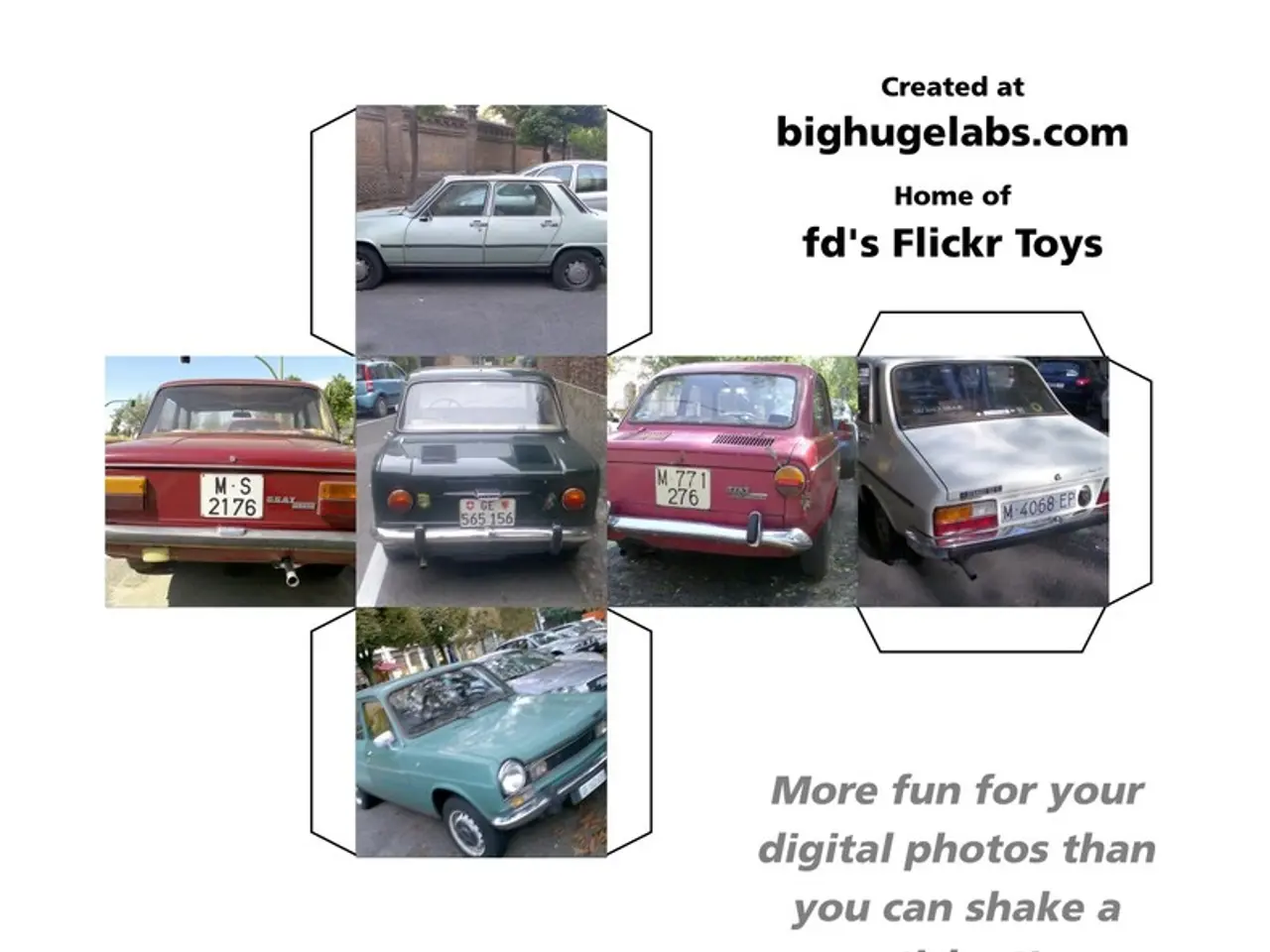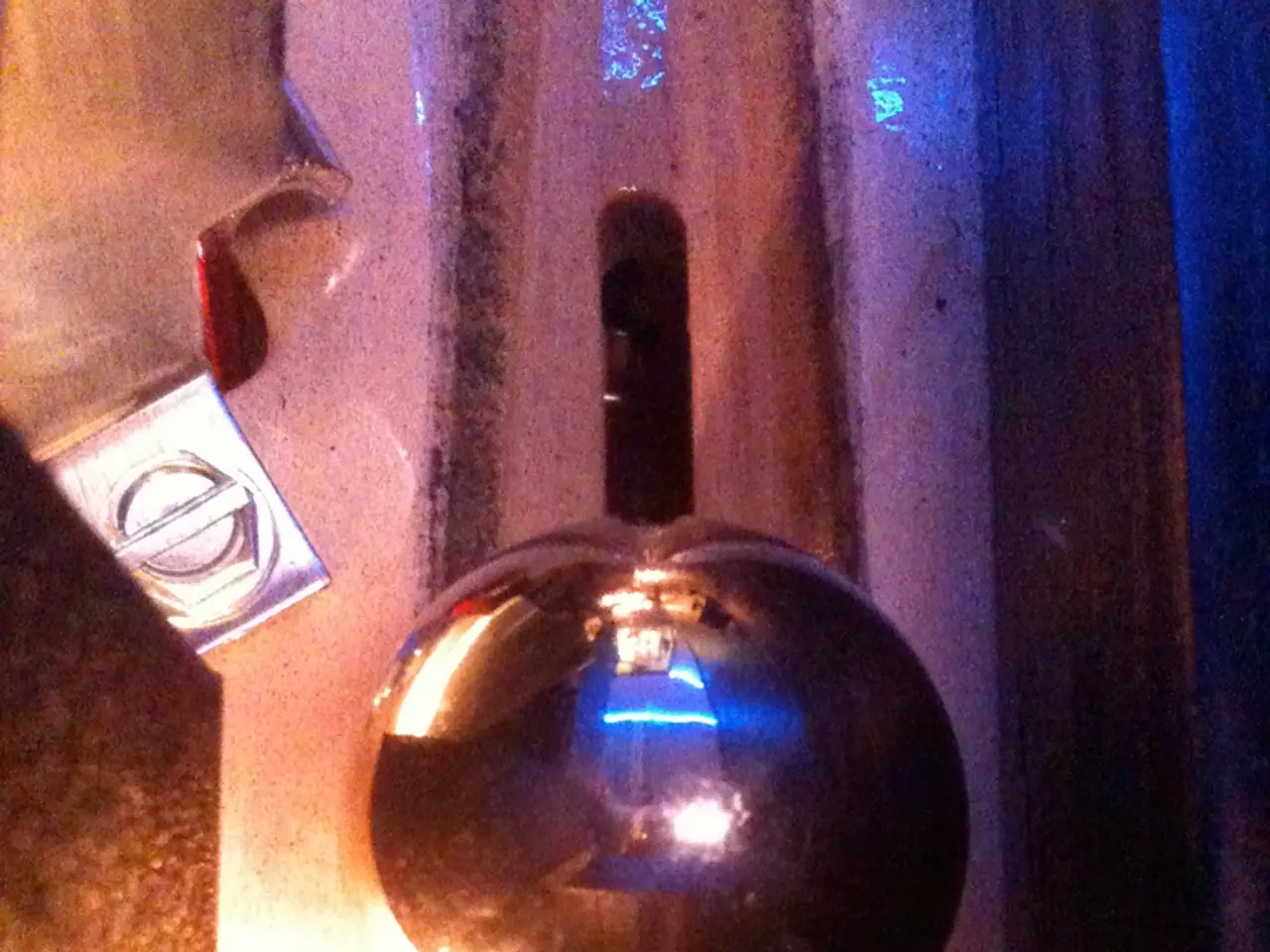Electric vehicle competitor BYD unveils automobiles boasting megawatts of power and cutting-edge engines.
In the ever-evolving world of electric vehicle (EV) technology, two giants stand out: BYD and Tesla. While both companies are pushing the boundaries of innovation, they have distinct approaches when it comes to charging speed and energy storage.
BYD, a Chinese automaker, has recently unveiled two affordable EVs that outperform Tesla in charging speed. The Han L sedan and Tang L SUV, equipped with motors boasting record-setting speed and power density, will be powered by stationary batteries that serve as energy support in BYD's charging stations [1].
The charging speed of BYD's Super e-Platform is nothing short of revolutionary. Capable of ultra-high-speed charging up to 1,000 kW (1 megawatt), these vehicles can gain up to 400 km of range in as little as five minutes [2]. This technology is already integrated into the Han L sedan and Tang L SUV [3].
BYD's charging prowess is further enhanced by its Blade Battery, which uses Lithium Iron Phosphate (LFP) chemistry. Optimised for high charging rates, the battery technology allows for a charging multiplier of up to 10 C, a figure significantly higher than most other EVs [3]. The company is also exploring solid-state batteries with an estimated energy density of 400 Wh/kg, promising further improvements in the future [1].
In contrast, Tesla's Supercharger V3 network offers charging speeds of up to 250 kW for certain models like the Model S and Model X. This means that Tesla vehicles can charge up to 80% in about 45 minutes, depending on the model and conditions [4]. However, Tesla has not yet matched BYD's ultra-high-speed charging capability of 1 MW.
Tesla's battery technology is highly optimised for efficiency and range, but it does not currently offer the same level of ultra-fast charging as BYD's Super e-Platform. The company uses a variety of battery chemistries, including Nickel-Manganese-Cobalt (NMC) and Lithium Iron Phosphate (LFP) for some models.
In a summary comparison, BYD's technology offers significantly faster charging speeds with its 1 MW charging system, while Tesla's Supercharger network is widespread but not as fast. Both companies continue to innovate in battery technology, with BYD pushing the boundaries with solid-state batteries and Tesla focusing on optimising existing chemistries for better efficiency.
The Han L sedan and Tang L SUV will be charged with up to 1000 kilowatts, surpassing Tesla's maximum of 320 kilowatts in the Cybertruck [5]. This makes electric vehicle charging as fast as refueling a gasoline car for BYD's new offerings.
The Han L and Tang L electric vehicles also feature a new engine that spins at 30,511 RPM, the highest in mass production worldwide, and boasts the world's highest power density at 16.4 kilowatts per kilogram [6].
Both the Han L and Tang L electric vehicles come equipped with BYD's God's Eye B assistant, offering similar features to Tesla's recently launched FSD software in China [7]. The Tang L SUV retails for around €18,000 more than the Han L sedan, which starts at approximately €34,000 [8]. In comparison, Tesla's Model S in China currently starts at around €95,000, more than double the price of the Han L and Tang L.
As BYD continues to grow rapidly in 2024 and early 2025, producing batteries in bulk for its own and other vehicles [9], the company also plans to build 4000 charging stations in China that can charge up to 1 megawatt [10]. This strategic move positions BYD as a leader in the local and nearly global EV market.
No information was initially available regarding the export of the Han L and Tang L electric vehicles to Europe. However, with its groundbreaking technology and competitive pricing, BYD's foray into the European market is certainly an exciting prospect.
References: [1] CnEVPost. (2023). BYD's new Han L and Tang L electric vehicles can charge to 60% in just 5 minutes. Retrieved from https://www.cnevpost.com/2023/03/23/byds-new-han-l-and-tang-l-electric-vehicles-can-charge-to-60-in-just-5-minutes/ [2] CnEVPost. (2023). BYD's new Han L and Tang L electric vehicles can charge to 60% in just 5 minutes. Retrieved from https://www.cnevpost.com/2023/03/23/byds-new-han-l-and-tang-l-electric-vehicles-can-charge-to-60-in-just-5-minutes/ [3] CnEVPost. (2023). BYD unveils two affordable electric vehicles that outperform Tesla in charging. Retrieved from https://www.cnevpost.com/2023/03/23/byd-unveils-two-affordable-electric-vehicles-that-outperform-tesla-in-charging/ [4] Tesla. (2021). Supercharger V3. Retrieved from https://www.tesla.com/supercharger [5] CnEVPost. (2023). BYD's new Han L and Tang L electric vehicles can charge to 60% in just 5 minutes. Retrieved from https://www.cnevpost.com/2023/03/23/byds-new-han-l-and-tang-l-electric-vehicles-can-charge-to-60-in-just-5-minutes/ [6] CnEVPost. (2023). BYD's new Han L and Tang L electric vehicles can charge to 60% in just 5 minutes. Retrieved from https://www.cnevpost.com/2023/03/23/byds-new-han-l-and-tang-l-electric-vehicles-can-charge-to-60-in-just-5-minutes/ [7] CnEVPost. (2023). BYD's new Han L and Tang L electric vehicles come equipped with God's Eye B assistant. Retrieved from https://www.cnevpost.com/2023/03/23/byds-new-han-l-and-tang-l-electric-vehicles-come-equipped-with-gods-eye-b-assistant/ [8] CnEVPost. (2023). BYD's new Han L and Tang L electric vehicles come equipped with God's Eye B assistant. Retrieved from https://www.cnevpost.com/2023/03/23/byds-new-han-l-and-tang-l-electric-vehicles-come-equipped-with-gods-eye-b-assistant/ [9] CnEVPost. (2023). BYD to produce batteries in bulk for its own and other vehicles in 2024 and early 2025. Retrieved from https://www.cnevpost.com/2023/03/23/byd-to-produce-batteries-in-bulk-for-its-own-and-other-vehicles-in-2024-and-early-2025/ [10] CnEVPost. (2023). BYD plans to build 4000 charging stations in China that can charge up to 1 megawatt. Retrieved from https://www.cnevpost.com/2023/03/23/byd-plans-to-build-4000-charging-stations-in-china-that-can-charge-up-to-1-megawatt/ [11] CnEVPost. (2023). BYD's new Han L and Tang L electric vehicles lead local and nearly global EV market. Retrieved from https://www.cnevpost.com/2023/03/23/byds-new-han-l-and-tang-l-electric-vehicles-lead-local-and-nearly-global-ev-market/
- In the electric vehicle industry, BYD and Tesla are notable players, each with distinct approaches in charging speed and energy storage.
- BYD, a Chinese automaker, has announced two affordable electric vehicles that outperform Tesla in charging speed, thanks to the Super e-Platform's 1,000 kW charging capability.
- BYD's charging technology is also enhanced by its Blade Battery, using Lithium Iron Phosphate (LFP) chemistry and offering a charging multiplier of up to 10 C, significantly higher than most other EVs.
- Tesla's Supercharger V3 network offers charging speeds of up to 250 kW, but it doesn't match BYD's ultra-high-speed charging capability of 1 MW.
- In contrast to Tesla's battery technology optimized for efficiency and range, BYD is pushing the boundaries with solid-state batteries, promising further improvements in the future.




